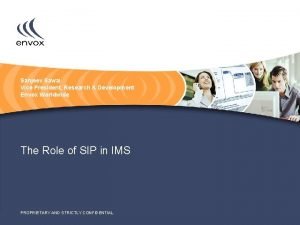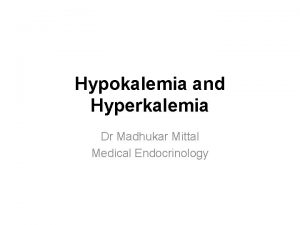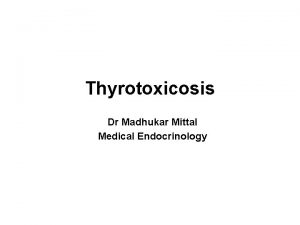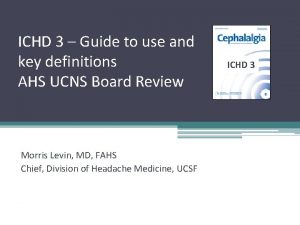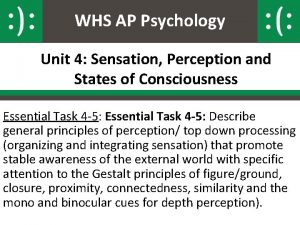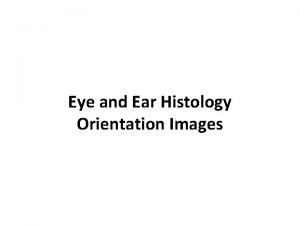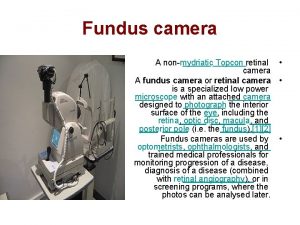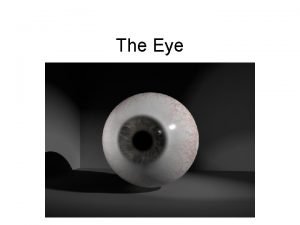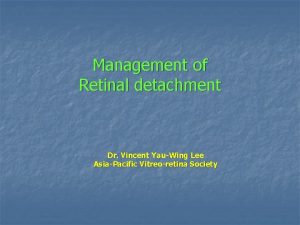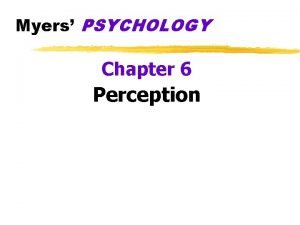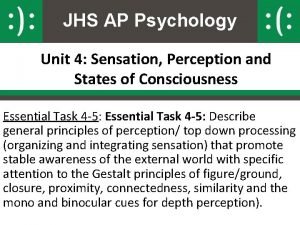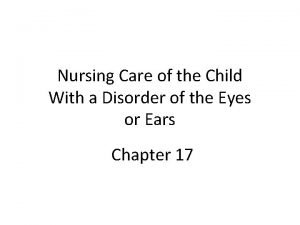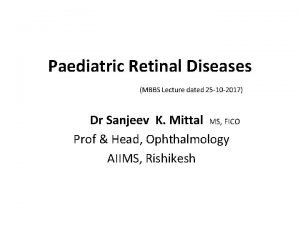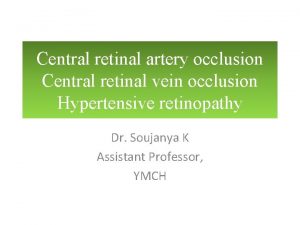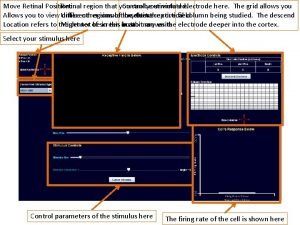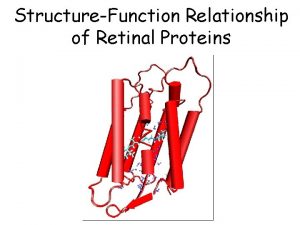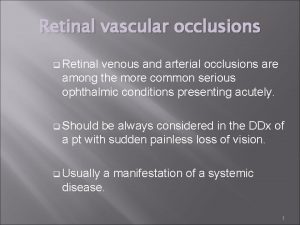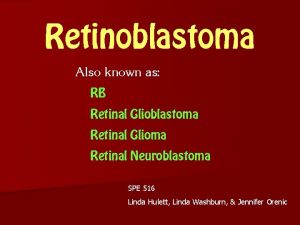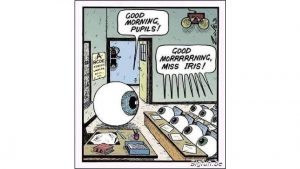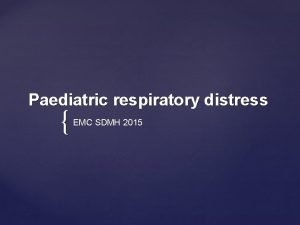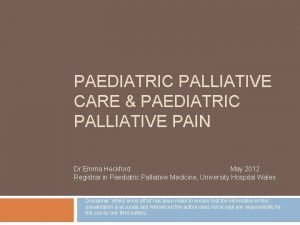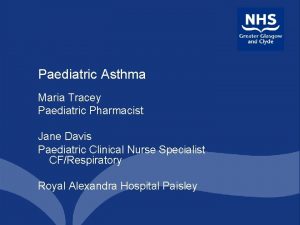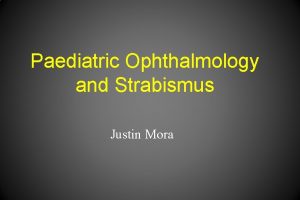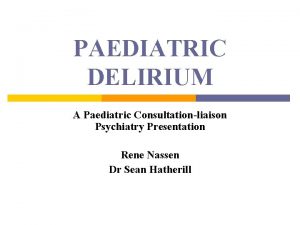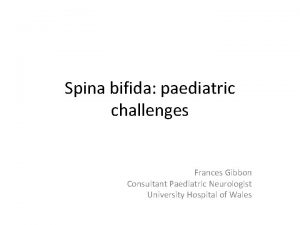Paediatric Retinal Diseases Dr Sanjeev K Mittal MS











![ROP- Treatment • 80% infants spontaneous regression • Treatment required if disease progresses i] ROP- Treatment • 80% infants spontaneous regression • Treatment required if disease progresses i]](https://slidetodoc.com/presentation_image_h2/599a324a13e2b6aa3dccb852f964f437/image-12.jpg)
















![MCQs 1] While working in a neonatal ICU your team delivers a premature infant MCQs 1] While working in a neonatal ICU your team delivers a premature infant](https://slidetodoc.com/presentation_image_h2/599a324a13e2b6aa3dccb852f964f437/image-29.jpg)




- Slides: 33

Paediatric Retinal Diseases Dr Sanjeev K. Mittal MS, FICO Prof & Head, Ophthalmology AIIMS, Rishikesh

Symptoms of Retinal Diseases Diminution of vision without pain Night blindness Photopsia- sparks or lightening flashes Metamorphopsia- distorted images micropsia & macropsia • Peripheral constriction of visual field • Patient unaware of symptoms • •

Symptoms of Retinal Diseases in Paediatric cases • • Diminution of vision without pain Night blindness Photopsia- sparks or lightening flashes Metamorphopsia- distorted images micropsia & macropsia Peripheral constriction of visual field Patient unaware of symptoms Jerky movements of eyes[Nystagmus]

Normal Fundus

What do we examine in fundus? • • • Fundal glow/ ocular media Optic disc Retinal blood vessels General (Background) fundus Macula & foveal reflex Peripheral fundus

Examination of Fundus (Ophthalmocopy) • Distant direct ophthalmoscopy • Direct ophthalmoscopy • Indirect ophthalmoscopy • Slit lamp assisted Fundus examinationi] Hruby lens ii] +90 D / +78 d lens iii] 3 -mirror contact lens

Types of Retinal diseases in Paediatric age group Retinopathy of Prematurity Retinitis Pigmentosa Phakomatosis Coat’s disease Hereditary Dystrophies of central retina and choroid • Myelinated nerve fibres • • •

Retinopathy of Prematurity(ROP) • B/L abnormality • Retinal neovascularization • Premature infants Ø <1500 gm Ø <32 week gestational age Ø Given high conc of Oxygen during first 10 days of life

ROP -Signs Dilatation of retinal vessels + hazy white patches in peripheral retina (temporal) Fibrous tissue Proliferation & rolling over (Pseudo glioma) Retinal detachment (Lost vision)

ROP Staging • • • Stage 1= a faint demarcation line Stage 2= an elevated ridge Stage 3= extraretinal fibrovascular tissue Stage 4= sub-total retinal detachment Stage 5= total retinal detachment

ROP
![ROP Treatment 80 infants spontaneous regression Treatment required if disease progresses i ROP- Treatment • 80% infants spontaneous regression • Treatment required if disease progresses i]](https://slidetodoc.com/presentation_image_h2/599a324a13e2b6aa3dccb852f964f437/image-12.jpg)
ROP- Treatment • 80% infants spontaneous regression • Treatment required if disease progresses i] Photocoagulation/ Cryotherapy of avascular, immature retina ii] Scleral buckling for RD • Prophylaxis is most important

ROP Prophylaxis • Monitor umblical arterial Pa Oxygen level (50 -100 is normal) • Examine temporal periphery of retina before the newborn/infant is discharged from hospital (look for threshold disease) • All premature infants <32 week or <1500 gm should be screened • If ROP develops, follow-up exam

Retinitis Pigmentosa Hereditary disease Inheritance-Autosomal recessive Consanguinity of parents Progressive night blindness Constriction of visual field B/L Symmetrical , diffuse pigmentary retinal dystrophy which affects Rods • Mostly symptoms appear in young age • •

Retinitis Pigmentosa Signs • Bony specule pigmentation • Arteriolar attenuation • Waxy pallor of disc

Retinitis Pigmentosa Investigations • Electro-retinography- amplitude • Electro-oculography- absence of light peak • Visual fields- ring scotoma

Retinitis Pigmentosa-Variants Atypical RP i. Retinitis pigmentosa sine pigmento ii. Retinitis puntata albescens iii. Sector retinitis pigmentosa

RP associated with systemic diseases. I. Laurence-moon-biedl syndrome(Bardet Biedle) II. Bassen-kornzweig syndrome (Abeta lipoproteinemia) III. Refsum’s syndrome IV. Usher’s syndrome V. Cockayne’s syndrome VI. Kearns-Sayre syndrome VII. Friedreich’s ataxia VIII. NARP syndrome

Persistent Hyperplastic Primary Vitreous • Failure of structures within primary vitreous to regress • Unilateral white pupilary reflex in full term infant • May be Anterior/ Posterior • May be associated with cataract, Glaucoma, Micro ophthalmos, persistent hyaloid artery • Bilateral cases may be associated with Patau’s syndrome or Norries disease.

Coat’s Disease • Chronic, progressive, vascular abnormality • Telangiectic retinal vessels leak fluid • Exudative bullous RD • Boys 18 months -18 years • Unilateral • White pupillary reflex • Tt: early photocoagulation /cryotherapy

Stargardt disease • Recessive, progresstive tapetoretinal dystrophy of central retina • Age 8 -14 years • Beaten bronze atrophy of fovea • Extensive chorioretinal atrophy • Poor vision

Hereditary Dystrophies of central retina and choroid Stargardt disease/ fundus flavimaculatus • Most common macular dystrophy • Gradual impairment of central vision

Phakomatosis (Systemic associations present) • Angiomatosis of retina with cerebellar haemangioblastoma (Von Hippel Lindau disease) • Tuberous sclerosis (Bourneville disease) • Neurofibromatosis (Von Recling hausen disease)

Phakomatosis • Sturge-weber’s syndrome- port wine stain along distribution of trigeminal nerve of affected side

White pupillary reflex (Leukocoria)

• Retinoblastoma- dealt in separate lecture

White pupillary reflex (Leukocoria) i. Retinoblastoma ii. ROP iii. Coats disease iv. Congenital cataract v. Toxocara infestation vi. Persistant hyperplastic vitreous vii. Retrolental hyperplasia viii. Retrolental inflammatory membrane due to Uvitis

![MCQs 1 While working in a neonatal ICU your team delivers a premature infant MCQs 1] While working in a neonatal ICU your team delivers a premature infant](https://slidetodoc.com/presentation_image_h2/599a324a13e2b6aa3dccb852f964f437/image-29.jpg)
MCQs 1] While working in a neonatal ICU your team delivers a premature infant at 27 weeks of gestation and weighing 1500 gm. How soon will you request fundus examination by an ophthalmologist? (a) Immediately (b) Three to four weeks after delivery (c) At 34 weeks’ gestational age (d) At 40 weeks’ gestational age

MCQs • With which of the following is PHPV associated? (a) Patau’s Syndrome (b)Down syndrome (c) Tuberous sclerosis (d) Sturge Weber syndrome

MCQs Amaurotic cat's eye reflex is seen in: a. Papilloedema b. Retinoblastoma c. Papillitis d. Retinitis

MCQs

MCQs
 Dr. sanjeev mehrotra
Dr. sanjeev mehrotra Sanjeev khemani
Sanjeev khemani Dr sanjeev chatni
Dr sanjeev chatni Sanjeev sawai
Sanjeev sawai Lahey's method
Lahey's method Arcelormittal net
Arcelormittal net Rowena mittal
Rowena mittal Prateek mittal
Prateek mittal Rajat mittal
Rajat mittal Mentimetre
Mentimetre Madhukar mittal
Madhukar mittal Leena mittal
Leena mittal Dr madhukar mittal
Dr madhukar mittal Atul mittal deloitte
Atul mittal deloitte 4 types of trust
4 types of trust Dr ankush mittal
Dr ankush mittal Paroxysmal hemicrania
Paroxysmal hemicrania Fascicular cambium
Fascicular cambium Retinal disparity psychology
Retinal disparity psychology Retinal detachment presentation
Retinal detachment presentation Vergensi
Vergensi Color constancy ap psychology
Color constancy ap psychology Outer plexiform layer
Outer plexiform layer Topcon retinal camera
Topcon retinal camera Screenless display technology documentation
Screenless display technology documentation Retinal disparity psychology
Retinal disparity psychology Nursing diagnosis of retinal detachment slideshare
Nursing diagnosis of retinal detachment slideshare Tabletop retinal detachment
Tabletop retinal detachment Papilliedema
Papilliedema Retinal break
Retinal break Retinal disparity definition psychology
Retinal disparity definition psychology Nursing diagnosis risk for aspiration
Nursing diagnosis risk for aspiration Ap psychology unit 4
Ap psychology unit 4 Hirschberg test
Hirschberg test



